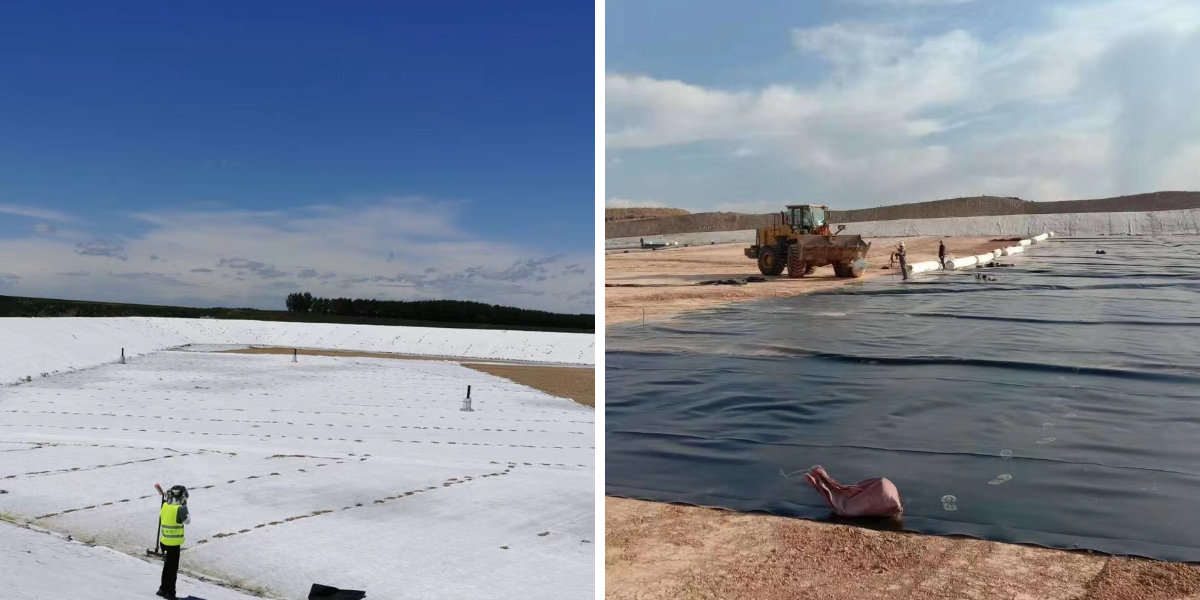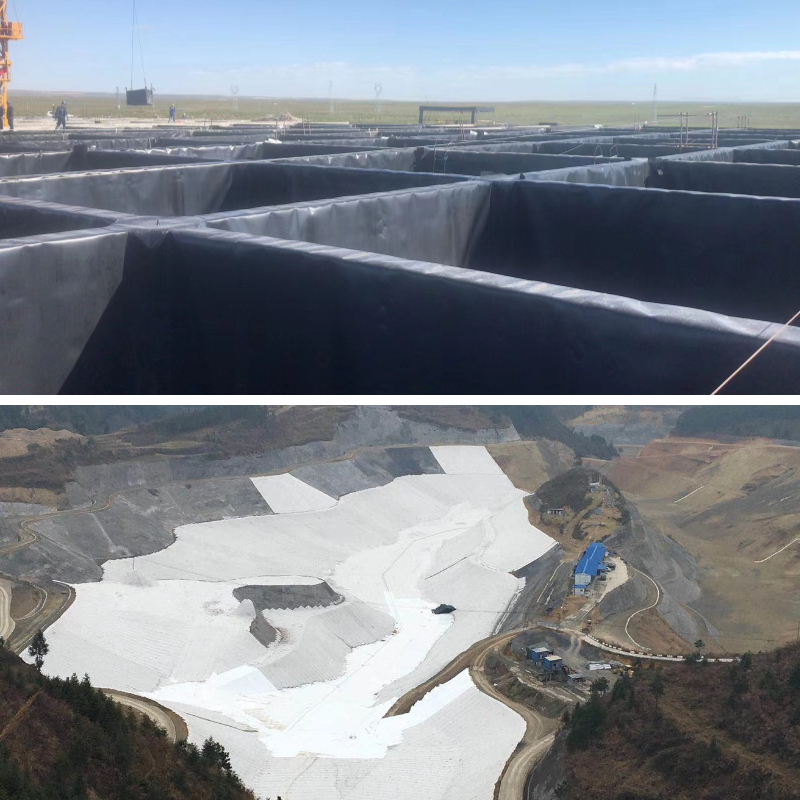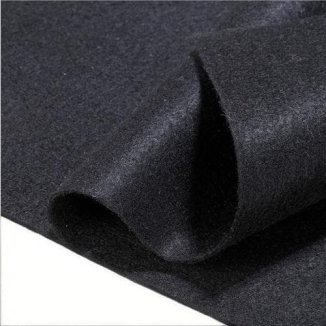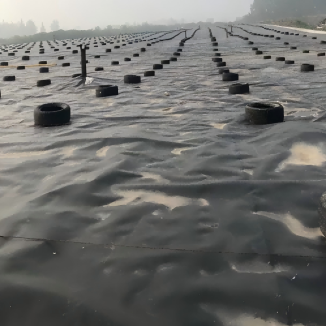Geotextile vs Geomembrane: Key Differences and When to Use Each
In civil engineering, environmental projects, and construction, the select out of geosynthetics can make or break a project’s durability, efficiency, and cost-effectiveness. Two of the most widely used geosynthetics are geotextiles and geomembranes, but they serve fantastic purposes despite their similar-sounding names. Understanding their differences is quintessential for discovering out on the applicable material for your project. Let’s dive into what gadgets them apart, their outstanding applications, and how to choose out between them—with a focus on cloth geotextile, HDPE geomembrane, and geofabric .
What Are Geotextiles?
Geotextiles, in many instances referred to as geofabric, are permeable fabrics made from synthetic assets like polyester (PET), polypropylene (PP), or polyethylene (PE). These elements are woven, non-woven, or knitted into a flexible sheet that lets in water and gases to bypass through while protecting soil particles.
Fabric geotextile is designed to cope with responsibilities associated to separation, filtration, drainage, reinforcement, and protection. For example, non-woven geotextiles excel at filtration and drainage due to their porous structure, whilst woven types supply large tensile strength, making them great for reinforcement in avenue beds or retaining walls.
The key trait of any geotextile—whether recognized as geofabric or cloth geotextile—is permeability. This lets in water to glide by way of barring compromising the material’s performance to stabilize soil or quit erosion.
What Are Geomembranes?
Geomembranes, on the different hand, are impermeable or semi-impermeable sheets made from artificial polymers. The most ordinary form is HDPE geomembrane (high-density polyethylene), prized for its chemical resistance, durability, and low permeability. Other substances embody PVC, EPDM, and LLDPE, however HDPE stays the go-to for worrying applications.
Unlike geotextiles, geomembranes are designed to block the waft of drinks and gases. Their major attribute is containment—preventing contaminants from seeping into soil or groundwater, or stopping water from escaping from reservoirs, ponds, or landfills. HDPE geomembrane is in precise valued in environmental responsibilities due to the truth it resists degradation from chemicals, UV rays, and excessive temperatures, making certain long-term performance.
Core Differences: Geotextile vs Geomembrane
While each are geosynthetics, their roles vary dramatically. Here’s how they stack up:
1. Permeability
Geotextiles (Geofabric/Fabric Geotextile): Permeable thru design. They allow water, air, and gases to pass through, making them critical for drainage and filtration. A cloth geotextile located between soil and combination in a road base, for example, lets water drain away at the same time as maintaining soil and stone separate.
Geomembranes (HDPE Geomembrane): Impermeable. HDPE geomembrane acts as a barrier, stopping drinks from transferring through. This is necessary in landfills, the location it stops leachate (toxic liquid) from contaminating groundwater.
2. Material & Structure
Geotextiles: Made from woven or non-woven synthetic fibers, growing a flexible, porous sheet. Geofabric is light-weight and adaptable to uneven surfaces.
Geomembranes: Made from thick, secure polymer sheets (e.g., HDPE geomembrane). They are less flexible than geotextiles on the other hand grant superior electrical power nearer to punctures and chemical damage.
3. Primary Functions
Geotextiles: Focus on separation (keeping distinct soil layers from mixing), filtration (trapping soil whilst letting water pass), drainage (channeling water away), reinforcement (adding tensile power to soil), and security (shielding different geosynthetics from damage).
Geomembranes: Focus on containment (preventing liquid/gas migration) and liners (lining ponds, landfills, or tanks to forestall leaks).
When to Use Geotextiles
Geotextiles shine in initiatives the neighborhood permeability and soil stabilization are key. Here are often occurring applications:
Road Construction: A cloth geotextile positioned between the subgrade (natural soil) and the base route (crushed stone) separates the layers, stopping the stone from sinking into the soil and decreasing renovation needs. Woven geotextiles moreover red meat up weak subgrades, developing load-bearing capacity.
Drainage Systems: Non-woven geofabric wraps spherical French drains or drainage pipes, filtering out soil particles while allowing water to waft freely, stopping clogs.
Erosion Control: Fabric geotextile laid on slopes or riverbanks stabilizes soil, reducing erosion from rain or water flow. It can in addition aid vegetation amplify via defending moisture.
Landscaping: Geotextiles below mulch or gravel paths grant up weeds from developing by means of capacity of whilst enabling water to attain plant roots.
When to Use Geomembranes
Geomembranes are quintessential in obligations requiring strict containment. HDPE geomembrane is the pinnacle wish right right here due to its durability:
Landfills: As a principal or secondary liner, HDPE geomembrane prevents leachate (liquid from decomposing waste) from seeping into groundwater. It in addition includes methane gas, which can be captured for energy.
Water Storage: Ponds, reservoirs, and irrigation canals use HDPE geomembrane liners to reduce seepage, conserving water and retaining water levels.
Mining: Geomembranes line tailings ponds (where mining waste is stored) to furnish up heavy metals and contaminants from polluting soil and water.
Wastewater Treatment: They line lagoons and tanks to encompass dealt with or untreated wastewater, stopping illness of surrounding areas.
Can They Be Used Together?
Absolutely! In many projects, fabric geotextile and HDPE geomembrane work in tandem. For example:
In landfill design, a HDPE geomembrane acts as the essential barrier, even as a cloth geotextile placed beneath it protects the geomembrane from punctures by way of way of the use of sharp rocks in the soil. Another layer of geofabric above the geomembrane may additionally in addition additionally filter leachate and give up clogging of drainage systems.
In pond construction, a cloth geotextile below the HDPE geomembrane cushions the liner in the direction of root growth or stones, extending its lifespan.
How to Choose: Geotextile vs Geomembrane
To determine which material to use, ask these questions:
Does your task require permeability? If yes, pick out a material geotextile (geofabric). If no (i.e., you pick a barrier), select for a geomembrane like HDPE geomembrane.
What is the important goal? Stabilization, drainage, or separation? Go with geotextiles. Containment or leak prevention? Go with geomembranes.
What are the environmental conditions? For chemical publicity or excessive temperatures, HDPE geomembrane is massive resistant. For flexible, low-budget soil support, cloth geotextile is better.
Final Thoughts
Geotextiles (geofabric/fabric geotextile) and geomembranes (especially HDPE geomembrane) are every quintessential geosynthetics, then again they serve contrary purposes: one approves flow, the special blocks it. By understanding their differences, you can pick out out the proper fabric to ensure your project’s success—whether you’re growing a road, lining a landfill, or stopping erosion.
Contact Us
Company Name: Shandong Chuangwei New Materials Co., LTD
Contact Person :Jaden Sylvan
Contact Number :+86 19305485668
WhatsApp:+86 19305485668
Enterprise Email: cggeosynthetics@gmail.com
Enterprise Address: Entrepreneurship Park, Dayue District, Tai 'an City,
Shandong Province










